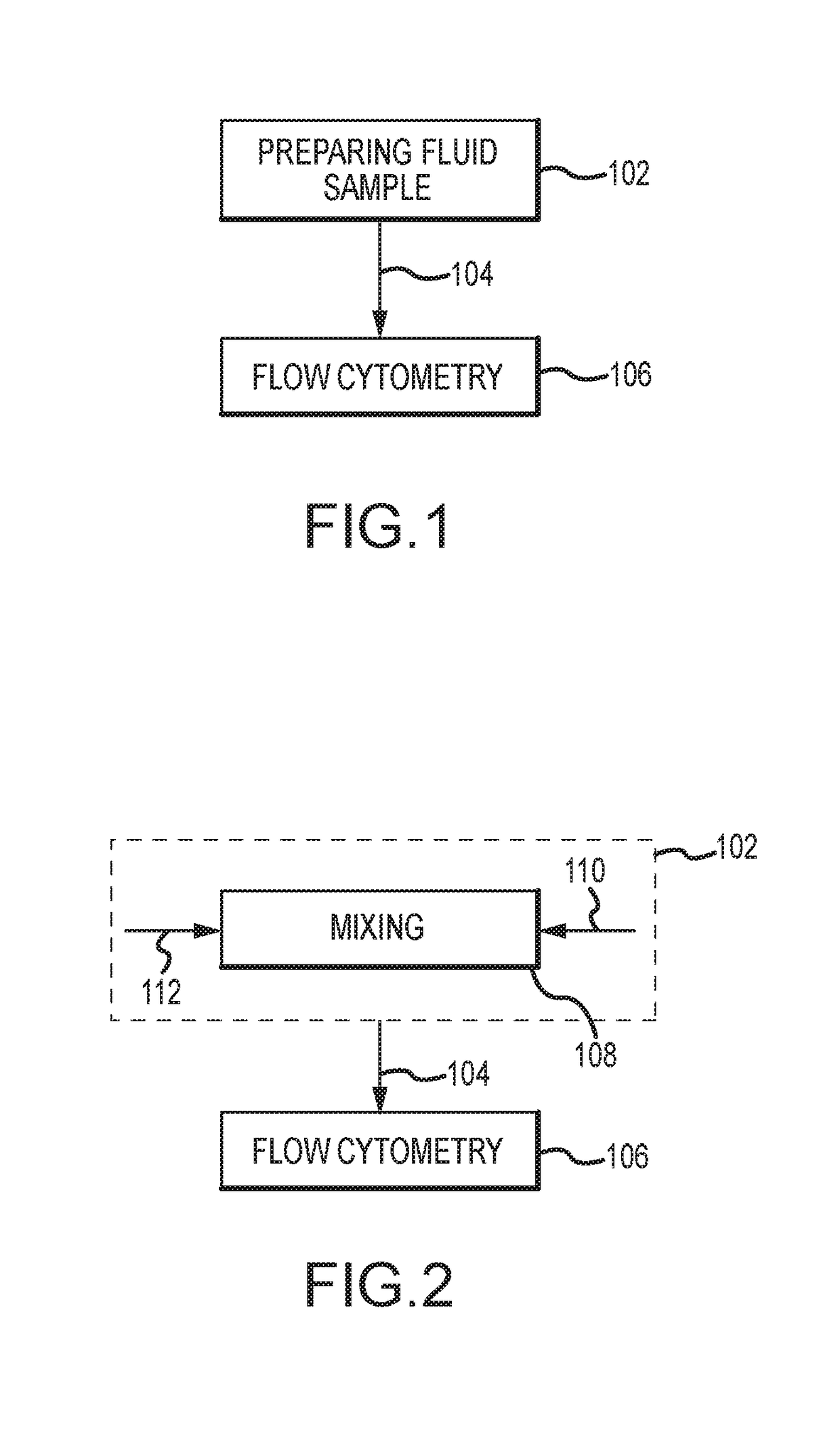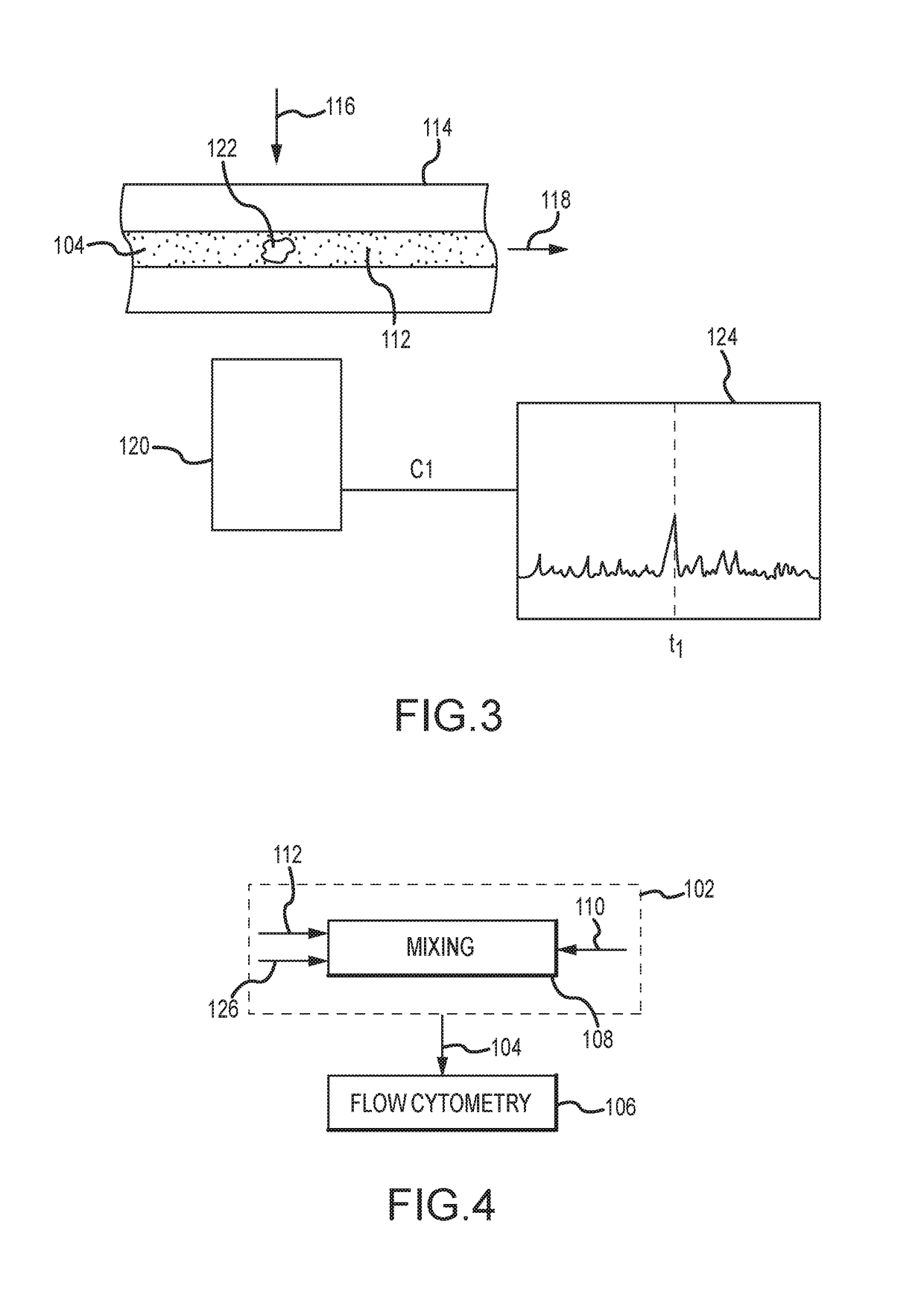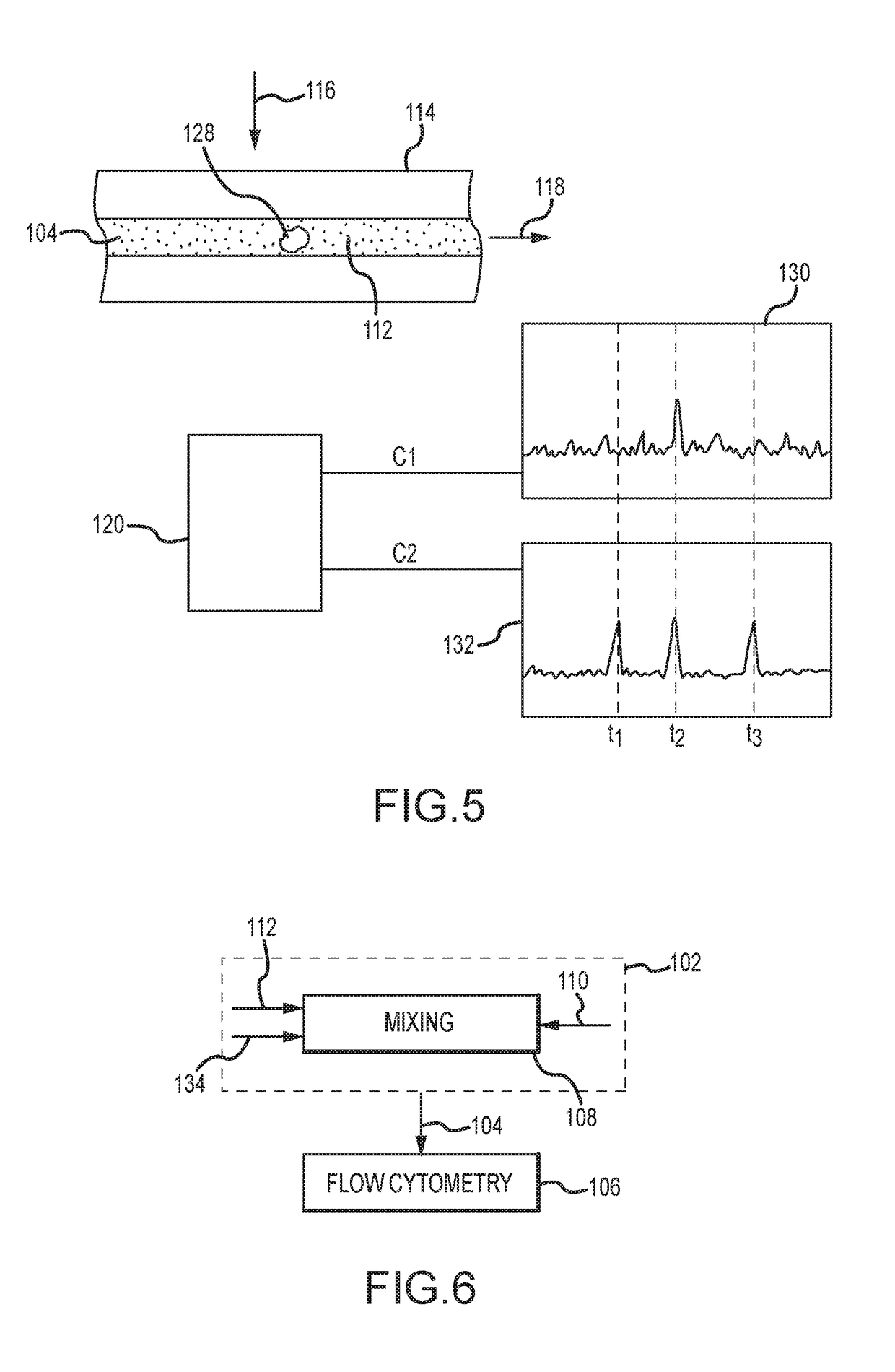Evaluating biological material for unassociated virus-size particles having an adenovirus hexon protein epitope
a technology of adenovirus and hexon protein, which is applied in the direction of viruses/bacteriophages, instruments, dsdna viruses, etc., can solve the problems of adenovirus being difficult to detect and accurately quantify, particularly difficult to accurately quantify, and serious problems for patients, so as to prevent the differentiation of emission signals
- Summary
- Abstract
- Description
- Claims
- Application Information
AI Technical Summary
Benefits of technology
Problems solved by technology
Method used
Image
Examples
examples
[0085]In the examples below, flow cytometry tests are performed on a Virus Counter® 3100 flow cytometer (ViroCyt, Inc.). Plots in the Figures referred to in these examples that plot virus particle concentration versus dilution factor are log-log plots. Flow cytometry tests using fluorescent antibody stain are performed without washing stained virus samples following staining and without detection of light scatter to assist with particle detection. Except as otherwise stated below, flourescent antibody stains in these examples generally include an average number of attached dye molecules (fluorophores) per antibody molecule in the fluorescent antibody stain (F / P ratio) of 3 to 7. Concentrations of fluorescent antibody stains provided in these examples are total concentrations in the samples. As will be appreciated, some of this fluorescent antibody stain attaches to and stains virus particles in the samples, but most of fluorescent antibody stain in the samples will typically be in a...
examples 1-2
[0086]In Examples 1 and 2 below flow cytometry tests are performed for evaluation of adeno-associated virus serotype 2 (AAV-2) using a fluorescent antibody stain including anti-AAV-2 monoclonal antibody A20 (PROGEN Biotechnik) conjugated with Alexa Fluor 532 dye (identified below as CF-A20 antibody stain). A20 is an antibody for a conformational epitope of assembled capsid of AAV-2 and AAV-3.
example 1
[0087]Comparative flow cytometry tests are performed on AAV-2 test formulations using the fluorescent antibody stain CF-A20 relative to controls of AAV-5 and AAV-9 which are not antigenic for the A20 antibody. Two different AAV-2 test formulations are prepared using AAV-2 obtained from different commercial sources. For all tests, the total concentration of the CF-A20 antibody stain (both bound and unbound to AAV-2) in the test solutions is about 2.5 micrograms per milliliter. Five test solutions are prepared at different dilutions of stock virus solution for each for each dilution series, to provide five different virus concentrations for testing in buffered solution. For a specificity control, the fluorescent antibody stain was tested against the AAV-5 and AAV-9 serotypes, as well as buffered solution including CF-A20 but absent virus of any type.
[0088]Results are summarized in FIG. 10, which shows a plot of AAV-2 concentration for each AAV-2 sample determined by flow cytometry as ...
PUM
| Property | Measurement | Unit |
|---|---|---|
| particle size | aaaaa | aaaaa |
| concentration | aaaaa | aaaaa |
| size | aaaaa | aaaaa |
Abstract
Description
Claims
Application Information
 Login to View More
Login to View More - R&D
- Intellectual Property
- Life Sciences
- Materials
- Tech Scout
- Unparalleled Data Quality
- Higher Quality Content
- 60% Fewer Hallucinations
Browse by: Latest US Patents, China's latest patents, Technical Efficacy Thesaurus, Application Domain, Technology Topic, Popular Technical Reports.
© 2025 PatSnap. All rights reserved.Legal|Privacy policy|Modern Slavery Act Transparency Statement|Sitemap|About US| Contact US: help@patsnap.com



